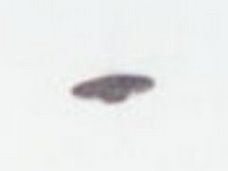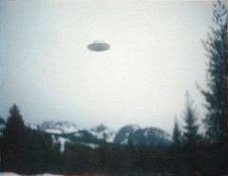 In November, 1872, the Mary Celeste left New York for Genoa with a crew of twelve aboard. On December 2 it was seen off the coast of Europe, apparently proceeding normally on its way. On December 4 it was sighted by the British ship Dei Gracia, in the middle of the Atlantic Ocean, in the region of the Azores islands, some eight hundred miles west of Portugal. The Mary Celeste was sailing briskly before the wind, but the captain on the Dei Gracia was surprised to receive no answer to his signals. Moving closer, the British crewmen saw there was no one at the helm or on the deck, and one of them said jokingly: “Here’s a ghost ship at last!”
In November, 1872, the Mary Celeste left New York for Genoa with a crew of twelve aboard. On December 2 it was seen off the coast of Europe, apparently proceeding normally on its way. On December 4 it was sighted by the British ship Dei Gracia, in the middle of the Atlantic Ocean, in the region of the Azores islands, some eight hundred miles west of Portugal. The Mary Celeste was sailing briskly before the wind, but the captain on the Dei Gracia was surprised to receive no answer to his signals. Moving closer, the British crewmen saw there was no one at the helm or on the deck, and one of them said jokingly: “Here’s a ghost ship at last!”His words were truer than he knew, for when some of the British sailors rowed to the Mary Celeste and boarded it, they found it completely empty. And yet, except for the heavy silence, there was nothing to give the impression that a tragedy had occurred. Everything was in order. Breakfast was on the table, the deck had been washed, the lines were correctly coiled, the lifeboat was in its davits in perfect condition. Recently washed clothes had been hung out to dry. There was plenty of food in the storeroom.
The British sailors searched the ship from stem to stern without finding a living soul.
This was the first time within memory that such a thing had ever happened at sea. There seemed to be no possible explanation. The Atlantic is always rather rough near the Azores at the time of the year, but there had been neither a storm nor unusually high waves, and a two-masted brigantine with a crew of twelve would have been able to cope with almost any kind of weather.
It may not be quite true to say that there was no living soul aboard the Mary Celeste: a placid grey cat was found. Disturbingly, sailors regard pets as bringing them good luck and always try to save them if they abandon ship. Pets are not, normally, left behind.
There was no solution to the enigma. If the crew members had been forced to leave the ship, they would have used the lifeboat; if there had been a mutiny, signs of struggle or disorder would have been found; if a storm had endangered the ship, it would have been damaged and the sails would have been taken in.
The British sailors made one discovery that might be regarded as a clue, although it served only to direct their conjectures into the realm of the unknown. In the ship’s log, the captain of the Mary Celeste had noted only routine details, such as weather conditions, until the last sentence, which was unfinished and contained these cryptic words: “A strange thing is happening to us.......”
It may not be quite true to say that there was no living soul aboard the Mary Celeste: a placid grey cat was found. Disturbingly, sailors regard pets as bringing them good luck and always try to save them if they abandon ship. Pets are not, normally, left behind.
There was no solution to the enigma. If the crew members had been forced to leave the ship, they would have used the lifeboat; if there had been a mutiny, signs of struggle or disorder would have been found; if a storm had endangered the ship, it would have been damaged and the sails would have been taken in.
The British sailors made one discovery that might be regarded as a clue, although it served only to direct their conjectures into the realm of the unknown. In the ship’s log, the captain of the Mary Celeste had noted only routine details, such as weather conditions, until the last sentence, which was unfinished and contained these cryptic words: “A strange thing is happening to us.......”














